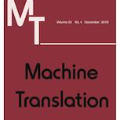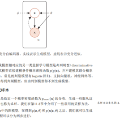Recently, simultaneous translation has gathered a lot of attention since it enables compelling applications such as subtitle translation for a live event or real-time video-call translation. Some of these translation applications allow editing of partial translation giving rise to re-translation approaches. The current re-translation approaches are based on autoregressive sequence generation models (ReTA), which generate tar-get tokens in the (partial) translation sequentially. The multiple re-translations with sequential generation inReTAmodelslead to an increased inference time gap between the incoming source input and the corresponding target output as the source input grows. Besides, due to the large number of inference operations involved, the ReTA models are not favorable for resource-constrained devices. In this work, we propose a faster re-translation system based on a non-autoregressive sequence generation model (FReTNA) to overcome the aforementioned limitations. We evaluate the proposed model on multiple translation tasks and our model reduces the inference times by several orders and achieves a competitive BLEUscore compared to the ReTA and streaming (Wait-k) models.The proposed model reduces the average computation time by a factor of 20 when compared to the ReTA model by incurring a small drop in the translation quality. It also outperforms the streaming-based Wait-k model both in terms of computation time (1.5 times lower) and translation quality.
翻译:最近,同声翻译引起了许多关注,因为它使得令人信服的应用程序,如现场活动或实时视频呼叫翻译的字幕翻译等有说服力的应用程序,如现场活动或实时视频呼叫翻译的字幕翻译。有些这些翻译应用程序允许编辑部分翻译,从而产生重新翻译的方法。目前的重新翻译方法基于自动递减序列生成模型(ReTA),这些模型在(部分)翻译中产生缓冲提取符号。在(部分)顺序翻译中,与相继生成的相继生成的多次翻译导致输入源输入和相应目标输出之间的引用时间差距加大。此外,由于所涉及的推断操作数量庞大,ReTA模型不利于对资源限制的装置进行部分翻译。在这项工作中,我们建议基于非递增序列生成模型(FRETNA)的更快的再翻译系统,以克服上述限制。我们评价关于多个翻译任务的拟议模型的多次翻译,我们的模型减少了引用时间,并且比RETA和流(等待模型)模型(等待-k)增加了一个竞争性的BLEU值。在20个模型和流翻译模型(等待-翻译模型)模型中,在低流翻译中,拟议质量计算时,还以降低一个平均时间计算。在20个模型中,拟议质量模型的递减。在计算中,同时通过一个以低时,还减少一个模型。





